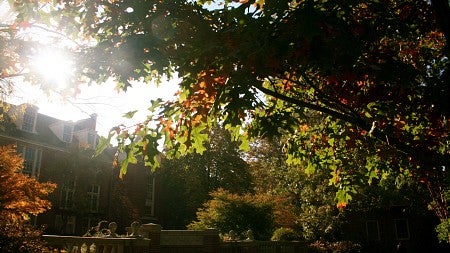University of Oregon Climate Action Plan 1
The University of Oregon signed the American College and University President’s Climate Commitment (ACUPCC) in 2007. The ACUPCC required all signatories to complete emissions inventories and draft climate action plans. In 2010, the Sustainability Office submitted the University of Oregon's first Climate Action Plan (CAP 1) which was signed by then-President Richard Lariviere. CAP 1 included an emissions inventory and a goal to eliminate institutional emissions by 2050, but lacked a detailed plan to achieve it. Nonetheless, significant progress was made. Under CAP 1, the UO:
- Created the Oregon Model for Sustainable Development (OMSD), which required all new buildings to be certified LEED GOLD. THE OMSD prevented energy and emissions from rising with the considerable growth of new buildings from 2011 to 2019. Learn more about the OMSD here;
- Completed greenhous gas emissions inventories on a 2-3 year cycle;
- Educated the campus community about institutional emissions, the activites they derive from, and responsibility to manage and reduce them;
- Established a fund to finance energy efficiency projects.
The original UO Climate Action Plan is available here.

Webpage updated for accuracy, February 19, 2024.

